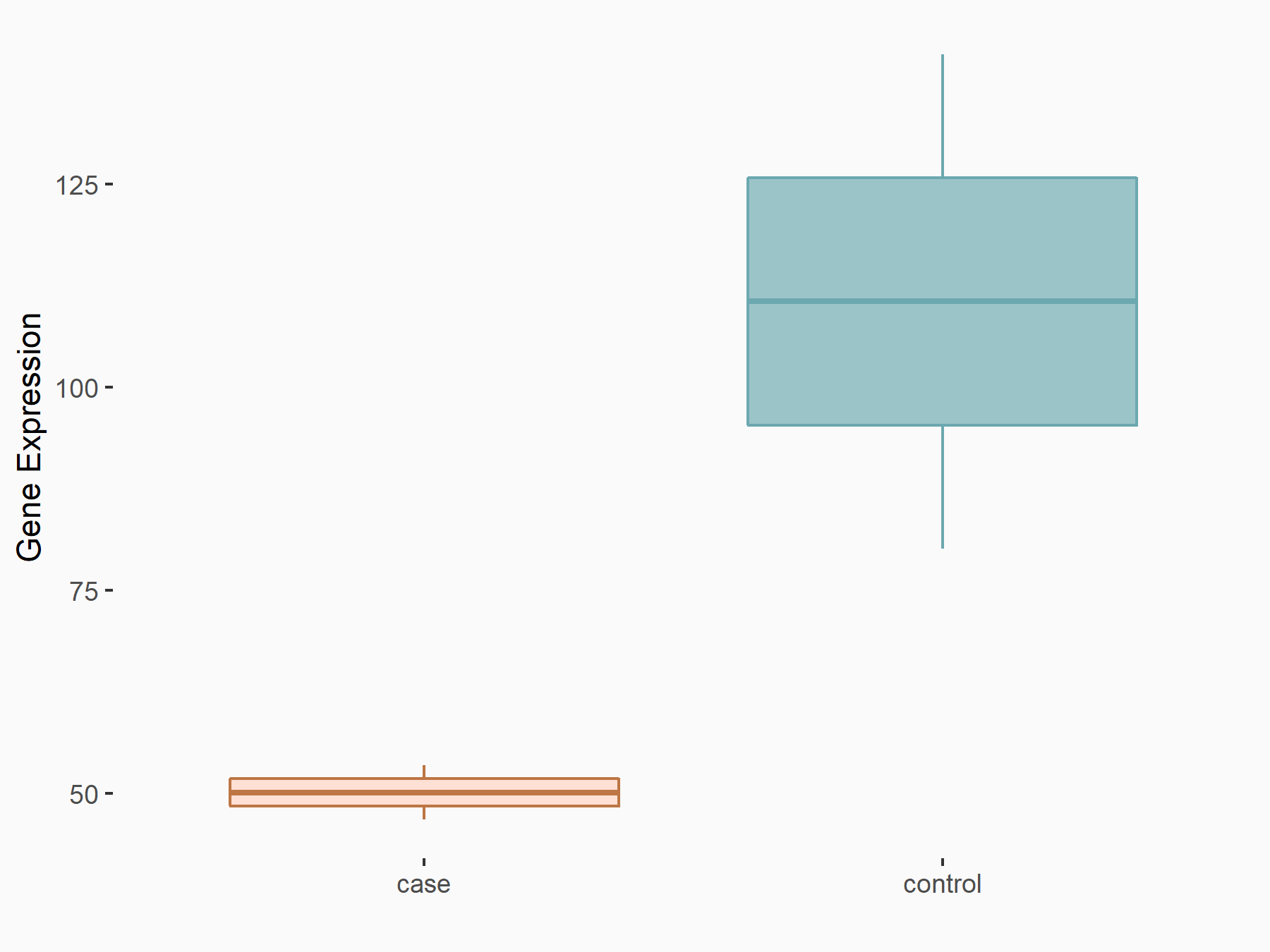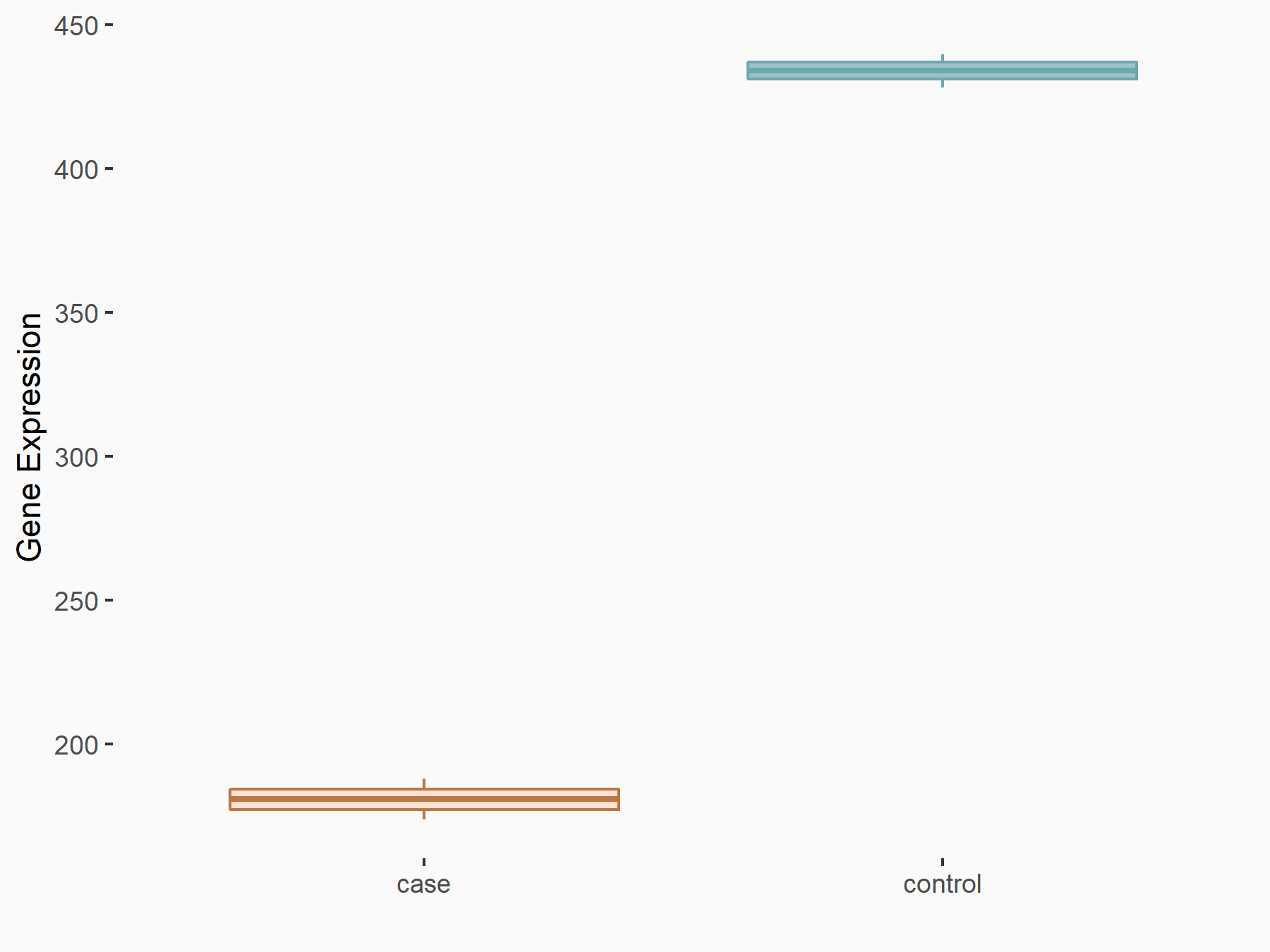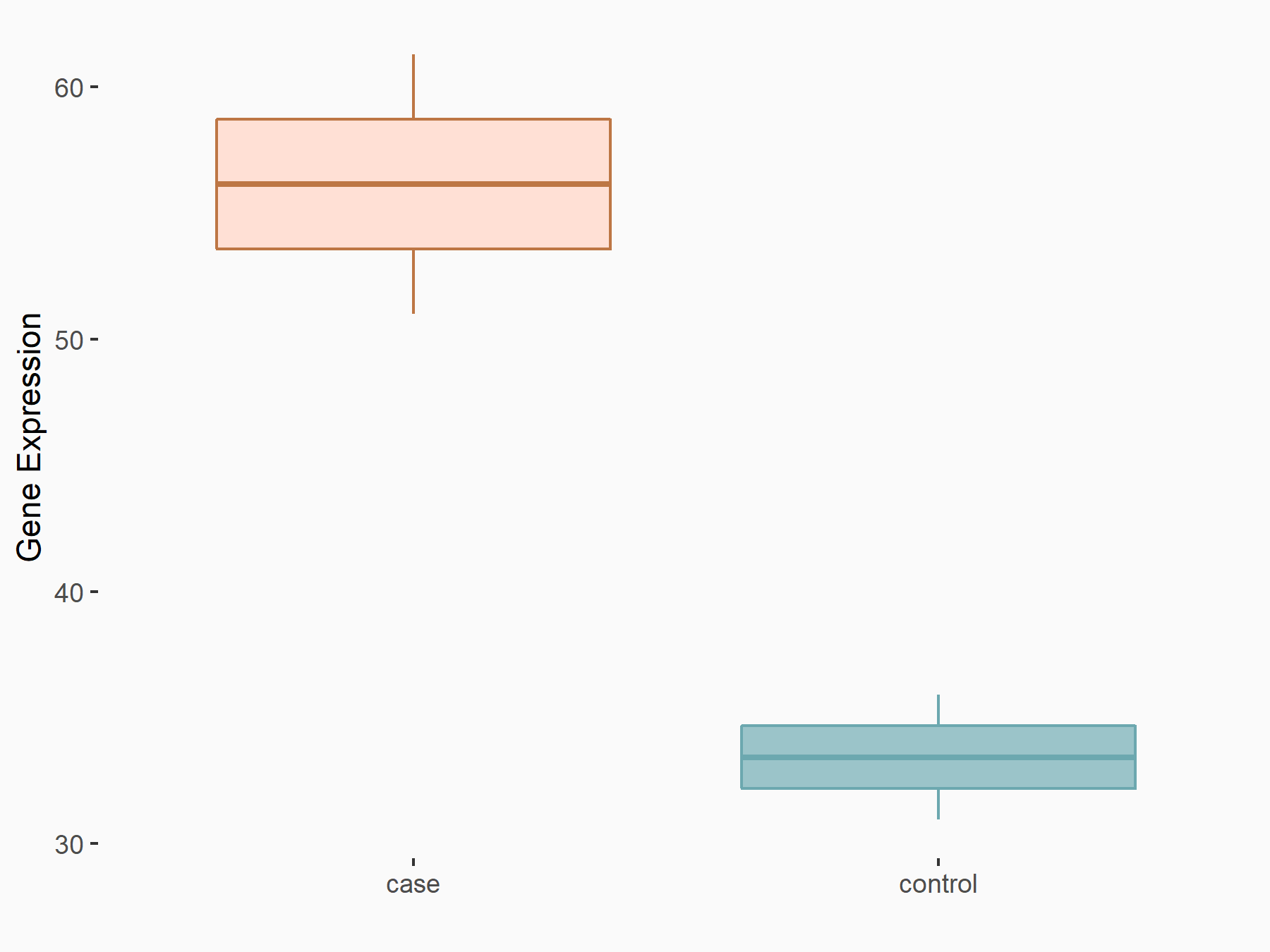m6A Target Gene Information
General Information of the m6A Target Gene (ID: M6ATAR00567)
Full List of m6A Methylation Regulator of This Target Gene and Corresponding Disease/Drug Response(s)
RIG-I
can be regulated by the following regulator(s), and cause disease/drug response(s). You can browse detail information of regulator(s) or disease/drug response(s).
Browse Regulator
Browse Disease
Methyltransferase-like 3 (METTL3) [WRITER]
| Representative RNA-seq result indicating the expression of this target gene regulated by METTL3 | ||
| Cell Line | LX2 cell line | Homo sapiens |
|
Treatment: shMETTL3 LX2 cells
Control: shLuc LX2 cells
|
GSE207909 | |
| Regulation |
  |
logFC: -1.14E+00 p-value: 3.48E-03 |
| More Results | Click to View More RNA-seq Results | |
| Representative RIP-seq result supporting the interaction between RIG-I and the regulator | ||
| Cell Line | MDA-MB-231 | Homo sapiens |
| Regulation | logFC: 1.75E+00 | GSE60213 |
| In total 3 item(s) under this regulator | ||||
| Experiment 1 Reporting the m6A Methylation Regulator of This Target Gene | [1] | |||
| Response Summary | METTL3 and METTL14 leads to an increase in viral RNA recognition by RIG-I-like receptor 1 (RIG-I), thereby stimulating type I interferon production. The obvious advantage is that m6A deficiency in HBV and HCV induces a higher IFN synthesis and in turn enhance adaptive immunity. | |||
| Target Regulation | Down regulation | |||
| Responsed Disease | Acute hepatitis B | ICD-11: 1E50.1 | ||
| Pathway Response | RIG-I-like receptor signaling pathway | hsa04622 | ||
| In-vitro Model | Huh-7 | Adult hepatocellular carcinoma | Homo sapiens | CVCL_0336 |
| Hep-G2 | Hepatoblastoma | Homo sapiens | CVCL_0027 | |
| Experiment 2 Reporting the m6A Methylation Regulator of This Target Gene | [1] | |||
| Response Summary | METTL3 and METTL14 leads to an increase in viral RNA recognition by RIG-I-like receptor 1 (RIG-I), thereby stimulating type I interferon production. The obvious advantage is that m6A deficiency in HBV and HCV induces a higher IFN synthesis and in turn enhance adaptive immunity. | |||
| Target Regulation | Down regulation | |||
| Responsed Disease | Acute hepatitis C | ICD-11: 1E50.2 | ||
| Pathway Response | RIG-I-like receptor signaling pathway | hsa04622 | ||
| In-vitro Model | Huh-7 | Adult hepatocellular carcinoma | Homo sapiens | CVCL_0336 |
| Hep-G2 | Hepatoblastoma | Homo sapiens | CVCL_0027 | |
| Experiment 3 Reporting the m6A Methylation Regulator of This Target Gene | [2] | |||
| Response Summary | In SARS-CoV-2 infection, depletion of the host cell m6A methyltransferase METTL3 decreases m6A levels in SARS-CoV-2 and host genes, and m6A reduction in viral RNA increases RIG-I-like receptor 1 (RIG-I) binding and subsequently enhances the downstream innate immune signaling pathway and inflammatory gene expression. | |||
| Target Regulation | Down regulation | |||
| Responsed Disease | COVID-19 | ICD-11: RA01 | ||
| Pathway Response | RIG-I-like receptor signaling pathway | hsa04622 | ||
| Cell Process | Immune responses | |||
| In-vitro Model | Calu-3 | Lung adenocarcinoma | Homo sapiens | CVCL_0609 |
| Caco-2 | Colon adenocarcinoma | Homo sapiens | CVCL_0025 | |
| HEK293-FT | Normal | Homo sapiens | CVCL_6911 | |
Methyltransferase-like 14 (METTL14) [WRITER]
| Representative RNA-seq result indicating the expression of this target gene regulated by METTL14 | ||
| Cell Line | Embryonic stem cells | Mus musculus |
|
Treatment: METTL14 knockout mESCs
Control: Wild type mESCs
|
GSE156481 | |
| Regulation |
  |
logFC: -1.26E+00 p-value: 3.52E-15 |
| More Results | Click to View More RNA-seq Results | |
| In total 2 item(s) under this regulator | ||||
| Experiment 1 Reporting the m6A Methylation Regulator of This Target Gene | [1] | |||
| Response Summary | METTL3 and METTL14 leads to an increase in viral RNA recognition by RIG-I-like receptor 1 (RIG-I), thereby stimulating type I interferon production. The obvious advantage is that m6A deficiency in HBV and HCV induces a higher IFN synthesis and in turn enhance adaptive immunity. | |||
| Target Regulation | Down regulation | |||
| Responsed Disease | Acute hepatitis B | ICD-11: 1E50.1 | ||
| Pathway Response | RIG-I-like receptor signaling pathway | hsa04622 | ||
| In-vitro Model | Huh-7 | Adult hepatocellular carcinoma | Homo sapiens | CVCL_0336 |
| Hep-G2 | Hepatoblastoma | Homo sapiens | CVCL_0027 | |
| Experiment 2 Reporting the m6A Methylation Regulator of This Target Gene | [1] | |||
| Response Summary | METTL3 and METTL14 leads to an increase in viral RNA recognition by RIG-I-like receptor 1 (RIG-I), thereby stimulating type I interferon production. The obvious advantage is that m6A deficiency in HBV and HCV induces a higher IFN synthesis and in turn enhance adaptive immunity. | |||
| Target Regulation | Down regulation | |||
| Responsed Disease | Acute hepatitis C | ICD-11: 1E50.2 | ||
| Pathway Response | RIG-I-like receptor signaling pathway | hsa04622 | ||
| In-vitro Model | Huh-7 | Adult hepatocellular carcinoma | Homo sapiens | CVCL_0336 |
| Hep-G2 | Hepatoblastoma | Homo sapiens | CVCL_0027 | |
RNA demethylase ALKBH5 (ALKBH5) [ERASER]
| Representative RNA-seq result indicating the expression of this target gene regulated by ALKBH5 | ||
| Cell Line | Cal27 cell line | Homo sapiens |
|
Treatment: siALKBH5 Cal27 cells
Control: siScramble Cal27 cells
|
GSE185886 | |
| Regulation |
  |
logFC: 7.29E-01 p-value: 2.91E-02 |
| More Results | Click to View More RNA-seq Results | |
| In total 1 item(s) under this regulator | ||||
| Experiment 1 Reporting the m6A Methylation Regulator of This Target Gene | [3] | |||
| Response Summary | ALKBH5 overexpression inhibits RIG-I-mediated IFN-Alpha secretion through the IKK-Epsilon/TBK1/IRF3 pathway. Upregulation of AKLBH5 negatively correlates with RIG-I-like receptor 1 (RIG-I) and IFN-Alpha expression in head and neck squamous cell carcinoma (HNSCC) patients. | |||
| Target Regulation | Down regulation | |||
| Responsed Disease | Head and neck squamous carcinoma | ICD-11: 2B6E | ||
| Pathway Response | RIG-I-like receptor signaling pathway | hsa04622 | ||
| In-vitro Model | CAL-27 | Tongue squamous cell carcinoma | Homo sapiens | CVCL_1107 |
| SCC-4 | Tongue squamous cell carcinoma | Homo sapiens | CVCL_1684 | |
| SCC-25 | Tongue squamous cell carcinoma | Homo sapiens | CVCL_1682 | |
| HEK293T | Normal | Homo sapiens | CVCL_0063 | |
| () | ||||
| In-vivo Model | For the subcutaneous implantation model, 1 × 106 Cal27 cells stably transduced with lentivirus were injected into the left or right flanks of BALB/c nude mice (aged 4-6 weeks). Following stable transfection, 2 × 105 SCC7 cells were subcutaneously inoculated into C3H mice (aged 6-8 weeks). | |||
Acute viral hepatitis [ICD-11: 1E50]
| In total 4 item(s) under this disease | ||||
| Experiment 1 Reporting the m6A-centered Disease Response | [1] | |||
| Response Summary | METTL3 and METTL14 leads to an increase in viral RNA recognition by RIG-I-like receptor 1 (RIG-I), thereby stimulating type I interferon production. The obvious advantage is that m6A deficiency in HBV and HCV induces a higher IFN synthesis and in turn enhance adaptive immunity. | |||
| Responsed Disease | Acute hepatitis B [ICD-11: 1E50.1] | |||
| Target Regulator | Methyltransferase-like 14 (METTL14) | WRITER | ||
| Target Regulation | Down regulation | |||
| Pathway Response | RIG-I-like receptor signaling pathway | hsa04622 | ||
| In-vitro Model | Huh-7 | Adult hepatocellular carcinoma | Homo sapiens | CVCL_0336 |
| Hep-G2 | Hepatoblastoma | Homo sapiens | CVCL_0027 | |
| Experiment 2 Reporting the m6A-centered Disease Response | [1] | |||
| Response Summary | METTL3 and METTL14 leads to an increase in viral RNA recognition by RIG-I-like receptor 1 (RIG-I), thereby stimulating type I interferon production. The obvious advantage is that m6A deficiency in HBV and HCV induces a higher IFN synthesis and in turn enhance adaptive immunity. | |||
| Responsed Disease | Acute hepatitis C [ICD-11: 1E50.2] | |||
| Target Regulator | Methyltransferase-like 14 (METTL14) | WRITER | ||
| Target Regulation | Down regulation | |||
| Pathway Response | RIG-I-like receptor signaling pathway | hsa04622 | ||
| In-vitro Model | Huh-7 | Adult hepatocellular carcinoma | Homo sapiens | CVCL_0336 |
| Hep-G2 | Hepatoblastoma | Homo sapiens | CVCL_0027 | |
| Experiment 3 Reporting the m6A-centered Disease Response | [1] | |||
| Response Summary | METTL3 and METTL14 leads to an increase in viral RNA recognition by RIG-I-like receptor 1 (RIG-I), thereby stimulating type I interferon production. The obvious advantage is that m6A deficiency in HBV and HCV induces a higher IFN synthesis and in turn enhance adaptive immunity. | |||
| Responsed Disease | Acute hepatitis B [ICD-11: 1E50.1] | |||
| Target Regulator | Methyltransferase-like 3 (METTL3) | WRITER | ||
| Target Regulation | Down regulation | |||
| Pathway Response | RIG-I-like receptor signaling pathway | hsa04622 | ||
| In-vitro Model | Huh-7 | Adult hepatocellular carcinoma | Homo sapiens | CVCL_0336 |
| Hep-G2 | Hepatoblastoma | Homo sapiens | CVCL_0027 | |
| Experiment 4 Reporting the m6A-centered Disease Response | [1] | |||
| Response Summary | METTL3 and METTL14 leads to an increase in viral RNA recognition by RIG-I-like receptor 1 (RIG-I), thereby stimulating type I interferon production. The obvious advantage is that m6A deficiency in HBV and HCV induces a higher IFN synthesis and in turn enhance adaptive immunity. | |||
| Responsed Disease | Acute hepatitis C [ICD-11: 1E50.2] | |||
| Target Regulator | Methyltransferase-like 3 (METTL3) | WRITER | ||
| Target Regulation | Down regulation | |||
| Pathway Response | RIG-I-like receptor signaling pathway | hsa04622 | ||
| In-vitro Model | Huh-7 | Adult hepatocellular carcinoma | Homo sapiens | CVCL_0336 |
| Hep-G2 | Hepatoblastoma | Homo sapiens | CVCL_0027 | |
Head and neck squamous carcinoma [ICD-11: 2B6E]
| In total 1 item(s) under this disease | ||||
| Experiment 1 Reporting the m6A-centered Disease Response | [3] | |||
| Response Summary | ALKBH5 overexpression inhibits RIG-I-mediated IFN-Alpha secretion through the IKK-Epsilon/TBK1/IRF3 pathway. Upregulation of AKLBH5 negatively correlates with RIG-I-like receptor 1 (RIG-I) and IFN-Alpha expression in head and neck squamous cell carcinoma (HNSCC) patients. | |||
| Responsed Disease | Head and neck squamous carcinoma [ICD-11: 2B6E] | |||
| Target Regulator | RNA demethylase ALKBH5 (ALKBH5) | ERASER | ||
| Target Regulation | Down regulation | |||
| Pathway Response | RIG-I-like receptor signaling pathway | hsa04622 | ||
| In-vitro Model | CAL-27 | Tongue squamous cell carcinoma | Homo sapiens | CVCL_1107 |
| SCC-4 | Tongue squamous cell carcinoma | Homo sapiens | CVCL_1684 | |
| SCC-25 | Tongue squamous cell carcinoma | Homo sapiens | CVCL_1682 | |
| HEK293T | Normal | Homo sapiens | CVCL_0063 | |
| () | ||||
| In-vivo Model | For the subcutaneous implantation model, 1 × 106 Cal27 cells stably transduced with lentivirus were injected into the left or right flanks of BALB/c nude mice (aged 4-6 weeks). Following stable transfection, 2 × 105 SCC7 cells were subcutaneously inoculated into C3H mice (aged 6-8 weeks). | |||
COVID-19 [ICD-11: RA01]
| In total 1 item(s) under this disease | ||||
| Experiment 1 Reporting the m6A-centered Disease Response | [2] | |||
| Response Summary | In SARS-CoV-2 infection, depletion of the host cell m6A methyltransferase METTL3 decreases m6A levels in SARS-CoV-2 and host genes, and m6A reduction in viral RNA increases RIG-I-like receptor 1 (RIG-I) binding and subsequently enhances the downstream innate immune signaling pathway and inflammatory gene expression. | |||
| Responsed Disease | COVID-19 [ICD-11: RA01] | |||
| Target Regulator | Methyltransferase-like 3 (METTL3) | WRITER | ||
| Target Regulation | Down regulation | |||
| Pathway Response | RIG-I-like receptor signaling pathway | hsa04622 | ||
| Cell Process | Immune responses | |||
| In-vitro Model | Calu-3 | Lung adenocarcinoma | Homo sapiens | CVCL_0609 |
| Caco-2 | Colon adenocarcinoma | Homo sapiens | CVCL_0025 | |
| HEK293-FT | Normal | Homo sapiens | CVCL_6911 | |
References